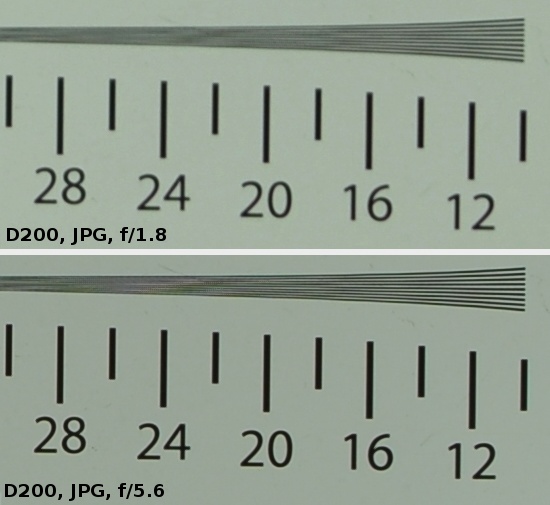Sigma 28 mm f/1.8 EX DG Aspherical Macro
4. Image resolution

There are different opinions about this lens – some people praise it, some people criticize it. It might be because of huge differences between particular specimens. One fact made us wonder, though. Two Sigma lenses have had one of the worst results in our lenses’ tests –the 28 mm model exactly and a 1.4/30 (now an updated version of that lens’s test is available on the website). Both these instruments took part in the same testing session as both were sent to us in the same parcel. It made us think that maybe their weak results stemmed from not very good handling by the courier. As we have been updating the tests adding full frame performance for some time now the Sigma 1.8/28 was one of the first candidates on our check list.
Please Support UsIf you enjoy our reviews and articles, and you want us to continue our work please, support our website by donating through PayPal. The funds are going to be used for paying our editorial team, renting servers, and equipping our testing studio; only that way we will be able to continue providing you interesting content for free. |
- - - - - - - - - - - - - - - - - - - - - - - - - - - - - - - - - - - - - - - - - - - - - - - -
Let’s see how the situation looks for another specimen of the same model, this time tested on a DX sensor of a Nikon D200.

It’s better but you can hardly go mad with delight. Firstly the maximum aperture performance is far from perfect. The level of 25 lpmm is too low to consider images you get there to be fully useful – they improve only near f/2.8. Fully sharp images we can see up from f/4.0. The lens achieves its maximum result by f/5.6 reaching about 43 lpmm,. The image quality at this aperture is hard to blame but it is worth notice that the best “primes” tested on a D200 reach the level of 46-48 lpmm. The Sigma still lags a bit behind then.
When it comes to a small sensor’s frame edge performance the lens doesn’t fare better. Weak quality images we’ll get in the aperture range from f/1.8 to f/4.0. Only on stopping down to f/5.6 the resolution becomes satisfactory. For a prime lens these results are very weak - after all the device can hardly be called a wide angle on a DX sensor.
Let’s move to the full frame performance on a Nikon’s D3x sensor. The appropriate graph is presented below.

We see the points for the frame centre arranged exactly as in the case of the D200. You can hardly expect something different because both D3x and D200 feature the same pixels density. Usually, though, the results on a D3x are a tad higher than those on a D200 and exactly the same is observed here. In this case we can also practically repeat our DX sensor’s performance assessment for the frame centre.
The full frame edge is a different matter. As demands are higher, the results are even weaker. Only near f/11 we can talk about a reasonable usefulness of the lens. When we open the aperture a bit more there are huge aberrations to be dealt with; when we stop it down even further – we have to deal with a negative influence of diffraction.
To sum up as the Sigma 1.8/28 defends itself more or less in the role of an equivalent of a standard lens on a small sensor, its usefulness as a wide angle device on full frame is very doubtful unless our expectations are rather low…
 |






